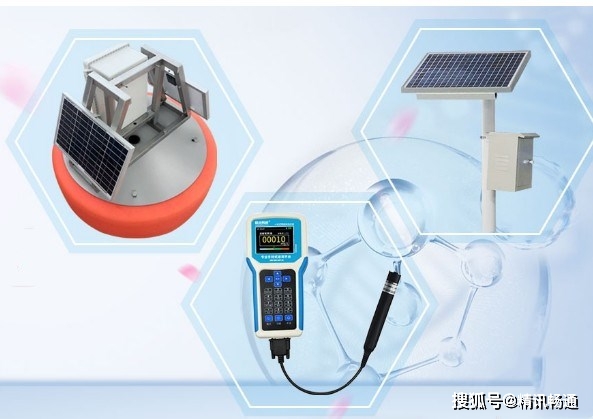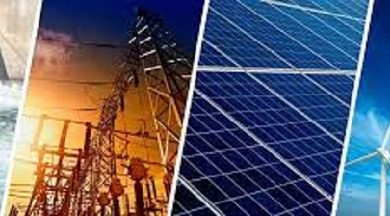Water quality automatic monitoring station

Background:
Because surface water is often discharged by coastal pollution sources. Due to the influence of meteorological conditions and seasonal changes, the water quality changes at any time. Therefore, regular instantaneous sampling and analysis of certain sections of the river can neither correctly. Reflect the continuous dynamic changes of water quality. Nor timely detect sudden changes in water quality caused by accidental events. In order to accurately grasp the current situation of water pollution.
Detect abnormal changes in water quality as soon as possible. Quickly make downstream water pollution forecasts, track pollution sources in time. Study the laws of water dilution and self-purification, and accumulate water quality data. The automatic monitoring system can be used to determine the degree of environmental pollution at any time and continuously. Understand the status of environmental quality. Study the impact of environmental pollution on human health and social activities. And then clarify the pollution mechanism and pollution laws. And supervise and prevent pollution. Evaluation.
Background analysis
In recent years, my country’s industrial water consumption has been at a relatively high level. According to statistics, from 2006 to 2014. My country’s industrial water consumption was maintained at about 140 billion cubic meters per year. A large amount of industrial water aggravated the dilemma of water shortage in my country. At the same time, my country discharges a large amount of industrial wastewater every year, causing serious pollution to the environment. In 2014, my country’s industrial wastewater discharge was 20.53 billion tons, a year-on-year decrease of 2.1%. Although my country’s industrial wastewater discharge is decreasing year by year, the current industrial wastewater discharge is still huge. Jingxun unblocked water quality automatic monitoring station can monitor the status of sewage discharge and reduce sewage discharge.
Many countries in the world have established automatic monitoring systems for water pollution. Based on the monitoring of comprehensive indicators of water pollution. And some specific items are referred to as AWMS or WQMS. That is to set up several monitoring stations equipped with continuous automatic monitoring instruments in a water system or a region. In recent years, my country has paid more and more attention to water quality and has become more and more strict with sewage standards. In response to the national call, Jingxun has developed an automatic water quality monitoring station that can monitor sewage and improve environmental quality.

Station-type water quality monitoring station
Monitoring range and parameters:
The automatic water quality monitoring station is a process of monitoring, and measuring the types of pollutants in the water body. The concentrations and changing trends of various pollutants, and evaluating the water quality. The monitoring range is wide, including unpolluted and polluted natural water (river, river, lake, sea, and groundwater). And various industrial drainage. According to actual needs and usage, the main monitoring parameters of our water quality online monitoring system include. Five parameters of water quality (temperature, turbidity, pH value, conductivity, dissolved oxygen), permanganate index, ammonia nitrogen.Various water quality ions, total phosphorus, total nitrogen, and river flow parameters.
Floating water quality monitoring station
Features:
●Evaluate the environmental quality and predict the development trend of environmental quality. This includes judging whether the environmental quality conforms to the national environmental quality standards, evaluating the impact of pollution sources, evaluating the pollution pathways of pollutants in the lake, and predicting the future development of environmental pollution.
●Accumulate a large amount of monitoring data, establish an environmental monitoring and remuneration database, and provide a scientific basis for formulating and revising practical environmental protection regulations, environmental standards, environmental planning, and management.
●Study the pollution diffusion pattern and law to provide the basis for forecasting and forecasting environmental quality and environmental governance.
●Accumulate long-term monitoring data of environmental background, and provide services to accurately grasp environmental capacity, rationally use natural resources, and formulate and revise environmental standards.
Water plays an irreplaceable role in human survival and development. However, due to the frequent occurrence of flood disasters that seriously affect human safety and property losses, flood disasters in small and medium-sized rivers frequently recur and have become the main body of flood disaster losses in my country. Water conservancy and flood control is related to social stability and people’s safety, so it is essential to strengthening emergency monitoring of heavy rain and floods in medium and small rivers.
Smart Hydrological Monitoring System
Overview:
The hydrological monitoring system is suitable for remote monitoring of real-time water and rain conditions in rivers, reservoirs, etc. The management department can use this system to grasp the hydrological conditions of river basins such as precipitation and section water level in a timely manner, so as to make timely management decisions. The hydrological monitoring and early warning system has played an important role in early warning of flood disasters and avoiding human and economic losses.
Hydrological telemetry terminal
The hydrological telemetry terminal is designed for the above-mentioned difficulties in hydrological monitoring. It is a multi-functional, low-power, remote telemetry device suitable for harsh application environments. It is widely used in monitoring projects such as water level, rainfall, image, water quality, velocity, and flow.
Hydrological telemetry terminal of hydrological monitoring system

Monitoring content:
The monitoring contents of the hydrological monitoring system for small and medium rivers include water level, flow rate, flow rate, rainfall (snow) evaporation, sediment, ice, moisture content, water quality, etc. The system uses wireless communication to transmit monitoring data in real-time, which can greatly improve the work efficiency of the hydrological department.
System functions:
Collection: real-time monitoring of data such as water level/rainfall/equipment status and on-site images
Alarm: automatic alarm when the data exceeds the limit / the device is illegally opened / moves or fails / the voltage is too low
Storage: Field equipment and system platform perform dual storage of real-time data/historical data
Query: You can query real-time data/historical data and communication logs at any time
Analysis: intelligent analysis of monitoring data, form daily/monthly/annual report and support printout
Management: Comprehensive management settings for monitoring data/monitoring points/administrators and other information
Docking: Docking with a variety of software and hardware equipment, and provincial and municipal water conservancy and hydrology comprehensive management platforms

Hydrological Monitoring System Jingxun Cloud
Weihai Jingxun unimpeded hydrological monitoring system can realize the monitoring of water and rainfall. Rain conditions, and upload the data to the cloud platform to monitor the hydrological conditions in real-time. Which is helpful for the staff to understand the hydrological conditions in time. And avoid personnel injuries caused by disasters.





